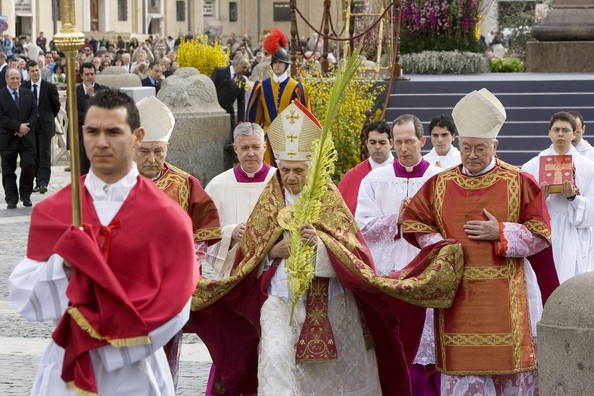It is a dish that in the past was served exclusively in the spring – at Easter to be more precise - which is how it got it’s name – Pasqua, which means Easter in Italian. And it is also why the traditional Pasqualina recipe called for 33 layers of puff pastry, one for each year of Christ’s life.

Layers of Deliciousness - As for the 33 layers of pastry, no one really does that any more. One more modern recipes I found called for 10 layers of pastry, five on the bottom and five on the top, but most of the recipes seemed to make do with four, even when using frozen grocery store puff pastry. The recipe below calls for two layers of puff pastry, one for the bottom and one for the top, but if you choose to go the traditional route and use more than one, be sure to brush a little olive oil between each layer so they stay flakey and don’t stick together.
- But the most distinctive difference between torta pasqualina and quiche is the addition of whole raw egg yolks to top the final layer. In the traditional torta recipe, the one with 33 layers of pastry, it calls for 13 yolks to be placed on the top of the torta, twelve yolks around the edges and one yolk in the center, representing Christ and His 12 apostles.

The Final Touch - But whether you use 13 or 4 as called for in the recipe below, the raw yolks are placed in a hollow made in the cheese layer with the back of a tablespoon. The whites are then lightly beaten and a few spoonfuls of the frothy whites are spooned over the top before adding the final layer of pastry.
- Torta Pasqualina
- Serves 6-8 (as an appetizer)
- 500 grams of frozen puff pastry
- 1 kg of Swiss chard
- ½ medium onion finely chopped500 gr. of whole milk ricotta250 gr. light cream
- 8 eggs
- 50 gr. butter125 gr. grated Parmesan cheese
- 1 tablespoon of chopped, fresh marjoram
- Salt and pepper
- Thaw the puff pastry at room temperature (about 2 hours)
- Sauté the chopped onion in a little butter and olive oil until it is translucent. Blanche the Swiss chard in boiling water for 3 or 4 minutes, drain, squeeze dry, rough chop and add to the sautéed onions and cook together to blend the flavors. Then add a pinch of salt, pepper and the marjoram to the Swiss chard and onions, mix and set aside to cool.
- In the meantime, as the Swiss chard is cooling, combine the ricotta with the Parmesan cheese, light cream and 2 lightly beaten eggs. Set aside.
- Roll out one portion of puff pastry and place it in the lightly greased baking pan, with a couple of inches of overlap, which will be used to seal the top. When the Swiss chard is room temperature, mix in 2 lightly beaten whole eggs and sprinkle with a few spoons of grated parmesan cheese and spread the mixture on the bottom of the baking pan.
- Top the Swiss chard with an even layer of ricotta. With the back of a tablespoon, make 4 evenly spaced indentation on the top of the cheese layer. Separate the first raw egg and place the yolk in the indentation. Fill the remaining indentations the same way, using the last 3 eggs.
- Lightly beat the egg whites and carefully spoon some of the frothy egg white mixture over the cheese and egg yolk layer. Cover with the remaining sheet (or sheets) of puff pastry and carefully seal the edges. Brush the top with a bit of milk, and prick with a fork or a small sharp knife, to allow the steam to escape.
- Bake in a pre-heated oven – 186 degrees C (360 degrees F) for 40 minutes, or until golden brown. If the instructions on the package of frozen puff pastry call for a higher temperature, I would suggest following those directions, just check the torta often to make sure it cooking and browning and not burning.
- Serve warm or room temperature.
-

Perfect for a Picnic - Afterthoughts.
- If you are not familiar with Swiss chard, it’s a dark green leafy vegetable that looks a lot like spinach, but tastes a little sweeter. In other parts of the world Swiss chard stems come in different colors, but here in Italy they are always white. Like spinach, Swiss chard needs to be carefully washed and the stems trimmed.
- There is nothing that says you can’t mix the Swiss chard and ricotta together and eliminate the layers, and in fact many recipes call for you to do just that. You might be tempted to eliminate the egg yolks on the top layer as well, but I wouldn’t recommend it. They really do add an extra dimension to the dish.
- About puff pastry. Here in Italy puff pastry is sold two to a package, so I usually buy two packages for this recipe because I prefer four thin layers of dough. It’s not a bad idea to lightly grease your baking pan with olive oil, or line it with parchment paper, and if you use a spring form baking pan it will be easier to remove the torta for serving.
- Torta pasqualina can be served warm or cold and it’s a ‘must’ for the Easter table as it is perfect to take along for the traditional Pasquetta ‘picnic fuori casa’, picnic in the country – or at least out in the open - on Easter Monday, which is also a national holiday here in Italy. Happy Easter.

















